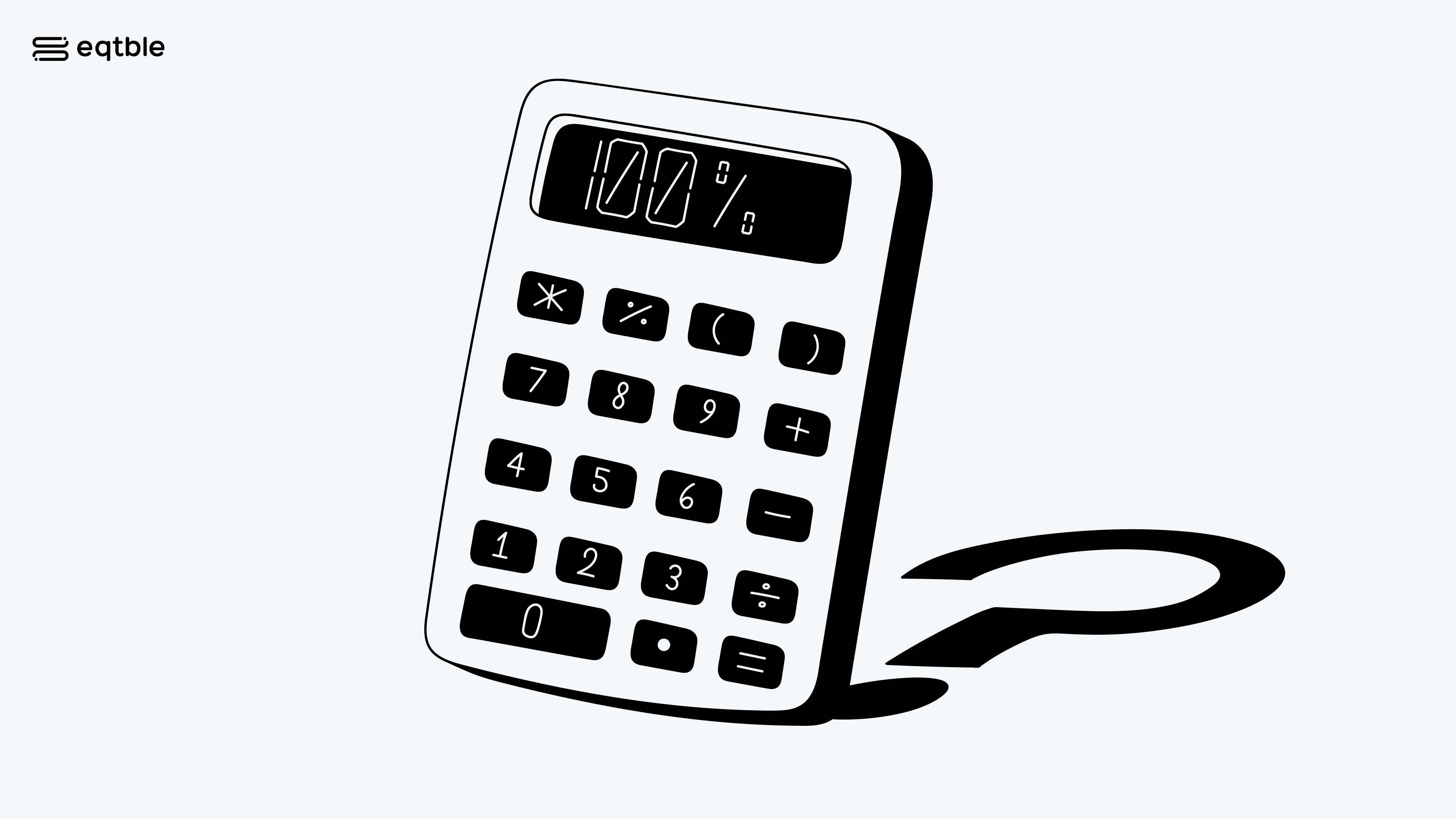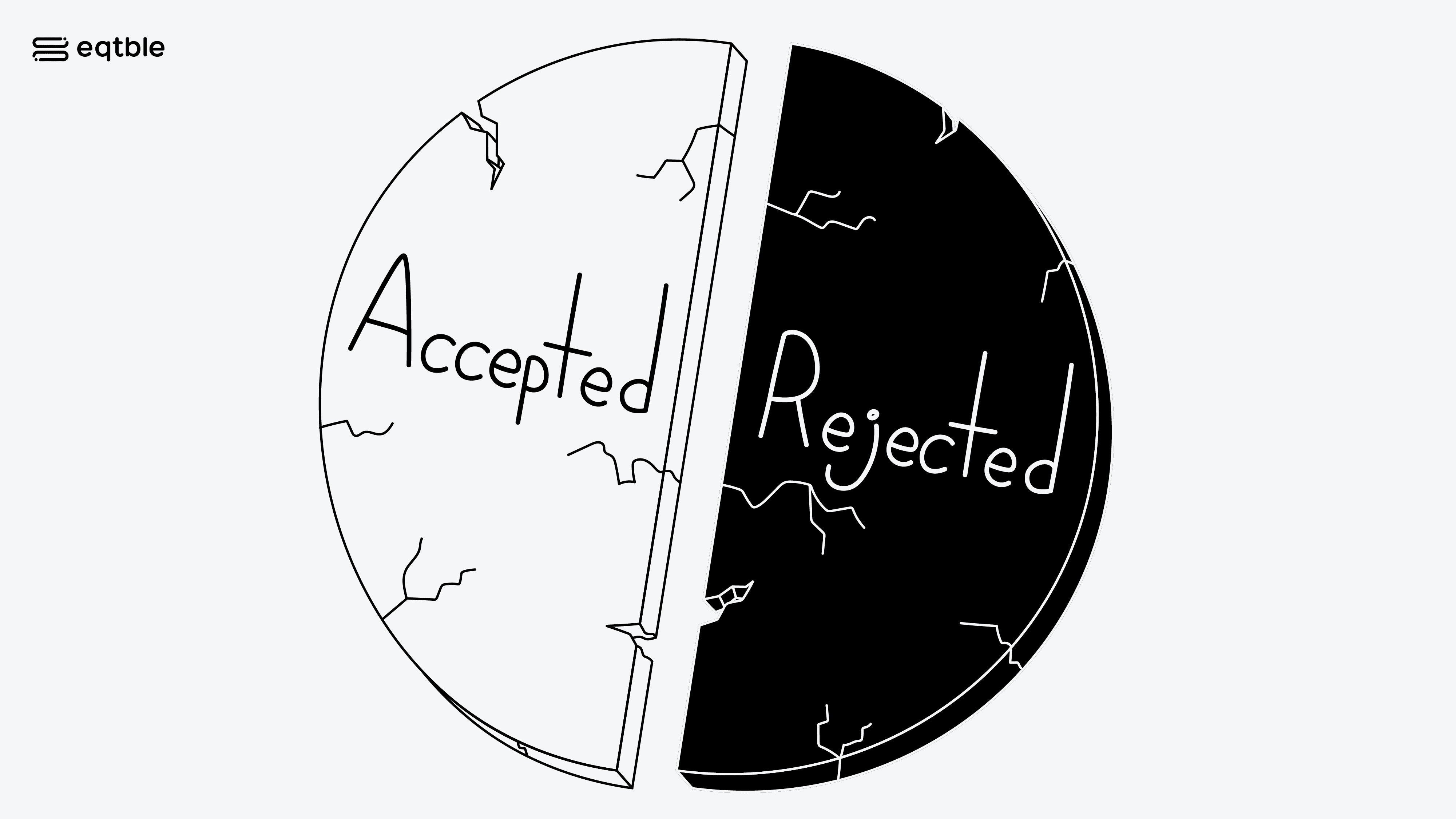Metrics That Matter
November 14, 2023
Offer Acceptance Rate
You're familiar with the age-old adage: "Numbers don't lie."
But in the world of recruitment, can we say the same? At the intersection of job offers, eager candidates, and company goals sits the 'Offer Acceptance Rate' – a number deemed the North Star for many recruiting teams and hiring managers.
It’s intended to give a crisp, unambiguous snapshot of hiring success. But what if this metric, often calculated with unwavering trust, has blind spots that lead us astray?

For many, the traditional ways of measuring this rate, aided by the omnipresent Applicant Tracking Systems (ATS), might be painting an incomplete, if not misleading, picture. Misreadings aren’t merely a statistical concern; they ripple through recruitment strategies, impacting budgets, team dynamics, and even company culture.
Is your 'Offer Acceptance Rate' truly reflective of your hiring prowess, or are there untold stories hidden beneath the surface? This article aims to shine a light on the lesser-known intricacies of a metric we thought we knew.
Offer Acceptance Rate: The Traditional Approach and Its Pitfalls

Traditionally, the formula used for calculating the offer acceptance rate is straightforward: the percentage of extended offers that are accepted. For instance, if a company extends 100 offers and 20 people accept, the acceptance rate is 20%. But, as many companies have come to realize, this surface simplicity can hide intrinsic complexities and pitfalls.
So, what’s a more precise alternative?
To truly capture the essence of an Offer Acceptance Rate, we should focus on the number of accepted offers as a fraction of the sum of both accepted and outright rejected offers. This method shines a light on the offers that either party – company or candidate – withdrew from, lending a clearer and more comprehensive lens.
Here's a deeper dive into the pitfalls associated with the traditional Offer Acceptance Rate:
The Pending Offer Paradox: Clouding the Offer Acceptance Rate

In most recruitment operations, once an offer is made to a candidate, there's a certain anticipatory window; a period where the candidate evaluates the proposal and the company eagerly waits for a response. This is the stage where offers are typically labeled as "pending." But herein lies a nuanced issue that many organizations fail to address.
What Exactly is a "Pending" Offer?
A pending offer is essentially one in limbo, neither accepted nor rejected. On the surface, it may seem straightforward to include these in calculations. After all, they're potential future acceptances, right? But that's where the simplicity ends and the complications begin.
Stale Offers: The Silent Distorters
The longer an offer remains pending, the more it veers towards becoming "stale." Imagine making an offer in January, and it's still pending in April. The reasons could be myriad: the candidate might be entertaining other options, there might be hesitations about the role or package, or perhaps, they're just procrastinating.
Such offers don't just represent undecided candidates; they become reflections of potential inefficiencies or gaps in the recruitment process. Should an organization continually follow up, revise the offer, or simply retract it? Each stale offer is a decision point, yet many companies let them float indefinitely, clouding their metrics and affecting their overall Offer Acceptance Rate.
Including pending offers in the Offer Acceptance Rate might seem like a minor oversight, but it has larger ramifications. For starters, it provides a skewed representation of how effective an organization's recruitment process is. If we think of the rate as a "success ratio," then pending offers, especially stale ones, depress this ratio, making the company appear less successful in its hiring than it actually might be.
Treating Pending Offers with the Nuance They Deserve
It's evident that pending offers need a separate categorization, one that acknowledges their transitory nature. They demand a different treatment — either accelerated decision-making processes or a separate metric altogether. They also call for introspection. If a significant portion of offers goes stale, it’s time for recruiters to analyze why. Is it the compensation, the job description, the company's brand, or some other factor?
The Verbal Offer Dilemma: When Words Distort Metrics

In the world of recruitment, verbal offers have become an intriguing yet troublesome entity. While they provide a flexible, swift, and sometimes less intimidating way to gauge a candidate's interest, they also introduce a layer of complexity in the tracking and measurement of an organization's hiring success.
The Nature of Verbal Offers
A verbal offer is just that — verbal. It's an informal commitment from the organization to the candidate, hinting at a future formal offer. The crux of the issue arises from its informality. Without any documentation, a verbal offer becomes challenging to track, leading to a host of potential complications.
Hiding Behind The Verbal Veil
Some companies use the verbal offer stage as a buffer. By making a verbal offer first, they're essentially testing the waters. If the candidate agrees, great — they proceed to the formal offer. If the candidate declines, no 'official' rejection needs to be recorded.
But this practice masks the real statistics.
For instance, if out of 100 verbal offers, only 50 lead to formal offers, the underlying 50% declination rate remains hidden, giving an incomplete picture of the recruitment process.
A Metric Overshadowed
When organizations fail to consider verbal offers in their Offer Acceptance Rate, they inadvertently exclude a crucial data set. Each declined verbal offer represents a potential gap in the recruitment process — be it misaligned job descriptions, ineffective interviewers, or lackluster candidate experience. By sidestepping these offers, companies miss out on valuable insights and opportunities for improvement.
Towards a More Transparent Approach
It's important for companies to treat verbal offers with the gravity they deserve. If used, they should be documented and incorporated into the broader hiring metrics. This practice ensures that the entire spectrum of offers, both verbal and written, is represented in the data, providing a holistic view of an organization's recruitment efficacy. The old adage, "Actions speak louder than words," seems to be reversed in the HR world, where words (verbal offers) hold profound implications.
The Timestamp Trouble: When Offer Creation Dates Mislead

Let's delve into a nuance that's often overlooked in the hiring process: the way we timestamp our offers. The general practice in many applicant tracking systems (ATS) is to categorize offers based on their creation dates. This might seem logical at first glance, but when you take a closer look, you'll find that it's a flawed system.
A Misleading Snapshot:
Taking offers at face value based on their creation date doesn't give the full picture. Imagine making an offer in January, but due to various negotiations, follow-ups, and candidate considerations, that offer is only accepted or rejected in April. By attributing this to January's data, we lose the significance of the efforts and interactions from February to April.
Effort Misalignment:
By focusing solely on the creation date, we might overlook the crucial periods when the real work happens - the times when the recruiter and candidate discuss, refine, and finalize the offer. These efforts are often more indicative of the actual hiring process quality than the mere creation date.
Adapting to a Better Approach:
Instead of basing our insights solely on the offer creation date, let's look at when the offer was actually accepted or declined. This way, we can truly gauge the effectiveness of our hiring process during the relevant month or period.
Fixing this problem means more than just adjusting dates; it means getting a clearer, more accurate picture of your recruiting process. This will allow you to pinpoint areas for improvement and make changes that will have a tangible impact on your recruitment efficiency. It's important to align your metrics with the actual recruitment journey, not just the starting point.
Quantity over Quality: The Problem of Mass Offers

In the quest to fill roles, some organizations may stray from the path of precision and lean into a "more is better" approach.
This can manifest in the form of mass offers, where an excessive number of offers are extended, with the hope that among them, some will yield acceptances. While at a cursory glance, this might seem like a practical approach, the repercussions can be manifold.
The Impersonal Touch
Candidates seek positions where they feel valued, recognized for their unique skills and competencies. When organizations adopt a scattergun approach to offers, it sends an implicit message: any candidate will do. This not only undermines the personal touch but can deter top talents who seek roles where their specific expertise is desired.
Misalignment of Role and Candidate
A job role isn't just a set of tasks — it encapsulates the vision of what an organization seeks in its future employee. Shooting in the dark with numerous offers reflects a lack of clarity in this vision. It suggests that the company hasn't adequately defined the role or understood who the right fit would be.
Resource Drain
Extending numerous offers isn't just a misstep in strategy; it's a tangible drain on resources. Each offer entails a cost — monetary, temporal, and effort-wise. When this is multiplied across numerous redundant offers, it becomes a significant drain on a company's recruitment resources.
A Signal of Desperation?
While the intent behind numerous offers might be speed or efficiency, the optics can be detrimental. To the external world, especially within industry circles, it might seem like a sign of desperation or an indication that the firm isn't an attractive place to work.
The crux of effective recruitment lies not in the volume of offers but in their precision. It's about understanding the intersection of what the organization needs and what the candidate offers. When this equilibrium is lost, it's not just a role that remains unfilled, it's an opportunity missed.
Digging Deeper into the Offer Acceptance Rate for DEI Insights

Here's the deal: the offer acceptance rate isn't just a metric to pat ourselves on the back. It's an alarm, a compass, a mirror - showing us not just our successes, but where we might be faltering, especially in terms of DEI.
Check Your Offers
Who are we extending offers to? If a specific demographic consistently receives more offers, we need to ask why. Is it intentional, or have we unintentionally fallen into a biased pattern?
Understand the Rejections
Even more telling than the offers themselves are the rejections. If certain groups disproportionately decline your offers, it's crucial to question why. Is there something in your organizational culture or the offer that isn't resonating with them?
Accountability & Improvement
Unveiling these biases isn't about laying blame. It's about taking a hard look at the current state of affairs, recognizing where there might be shortfalls, and committing to tangible changes. By being aware of these discrepancies, there's an opportunity to rectify the approach and foster a more inclusive hiring process.
Reframing Recruitment: Beyond the Numbers

Hiring goes beyond just filling a role. It's about understanding every nuance of the recruitment journey, from the initial offer stage to gauging biases in the process. The offer acceptance rate sheds light on these critical areas, showing us where we might be missing the mark.
But this is just one part of a broader conversation.
Our recent dive into the 'Quality of Hire' metric in "From Hiring to Impact: Rethinking the True Measure of Recruitment Success" raises even more pressing questions. Is 'Quality of Hire' really the ultimate measure of recruitment success? Let's continue the discussion and truly understand what effective recruitment looks like.
Discover more in our deep dive on 'Quality of Hire'.
Connect with Gabe







